
… it isn’t necessarily being done by the Metropolitan Police. Here’s a helpful guide to identifying the police force aiding or arresting you.
Taking your cue from W.S. Gilbert, imagine for a moment that you are a felon who has matured your ‘felonious little plans’. London policing is a complex web of overlapping responsibilities, but in broad terms you can expect to be at the mercy of one of the following eight independent police forces. In attempting to describe them, I’ll take the opportunity to use some of the more printable – and thus decidedly quaint and old-fashioned – slang terms for the British police and its officers, highlighted in bold italics, for some variety. Most of these terms can be applied to police officers of any force.
1. In most of London, the copper standing over you politely inquiring “is this your nuclear warhead Sir?” with a authoritative air and handcuffs at the ready will be a member of the London Metropolitan Police (the ‘Met’). Founded in 1829, this is the largest and most senior police force in England, and its boss, the Commissioner – currently Cressida Dick, the first woman to hold the post – the most senior police officer. The Met has police stations all over London, and its HQ is in New Scotland Yard, in Whitehall. This has its own Crime Museum, which is not open to the public – presumably in case it gives any budding criminals ideas. The Met also has a heritage centre. This is currently moving home, but would otherwise be open to academic types and other legitimate interested parties for research purposes – check out the ‘friends’ website.
Since 1890 the Met Police HQ has been called ‘New Scotland Yard’ regardless of where it is located.
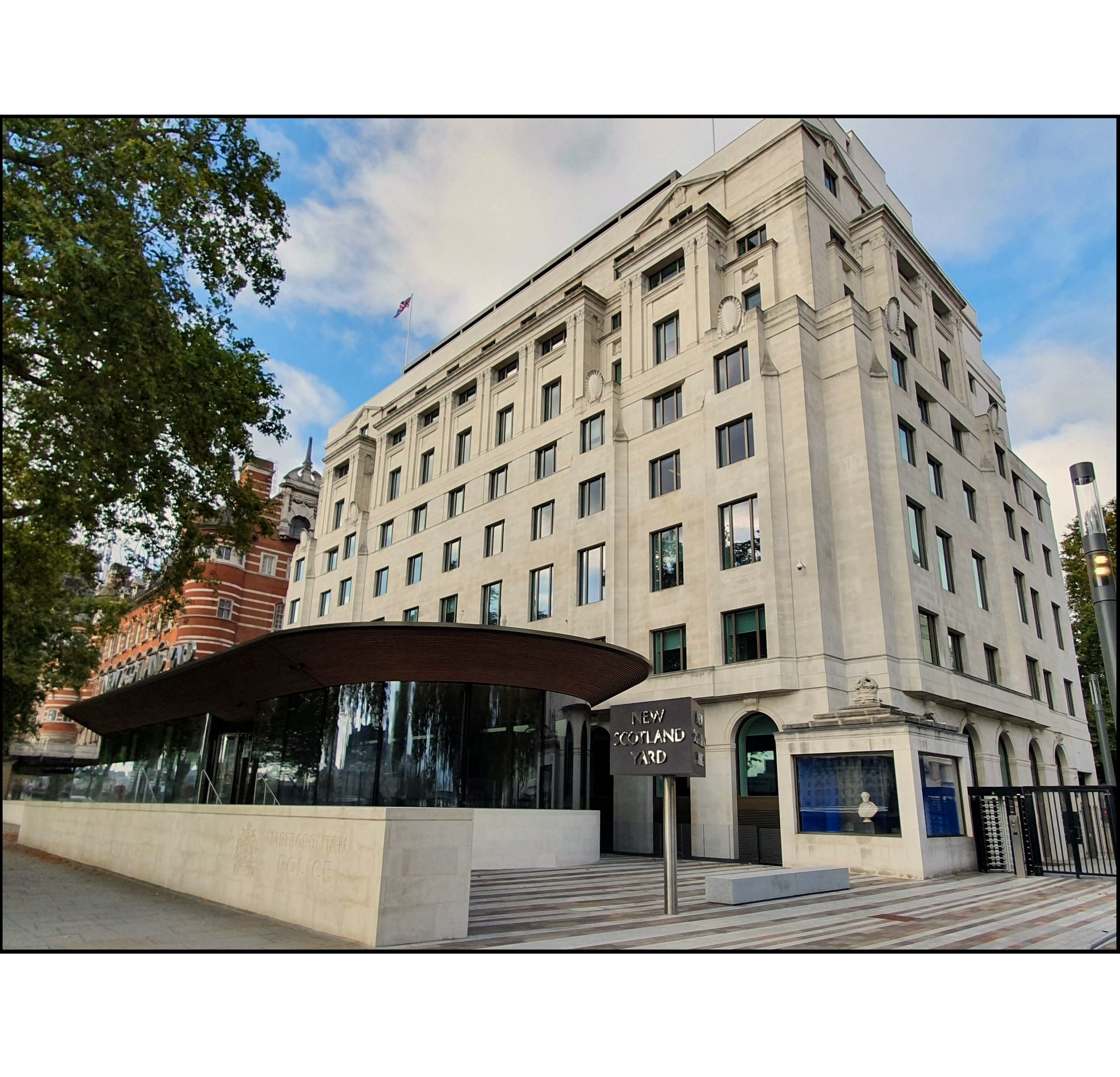
→ In 2016, the Met HQ returned here, to a building used until 1967, at which point it became Canon Row Police Station for 50 years. The familiar 1960s rotating sign was relocated from the 1967 HQ, now demolished.
The red-brick 1890 building in the background was also part of the HQ until 1967.
If your felonious activities take place on or abutting the River Thames, the rozzer apprehending you will likely be a member of the Marine Policing Unit. However, although the Marine Police Force was founded – privately – in 1798 as arguably the first police force in England, aimed at curtailing the rampant theft of cargo from ships moored in the Pool of London, they’ve been part of the Met since 1839. If you are arrested, you’ll end up at the unit’s HQ in historic Wapping High Street, sandwiched between some photogenic restored riverside warehouses, on the same site as it all began in 1798. Within the same building is a small Thames Police Museum.
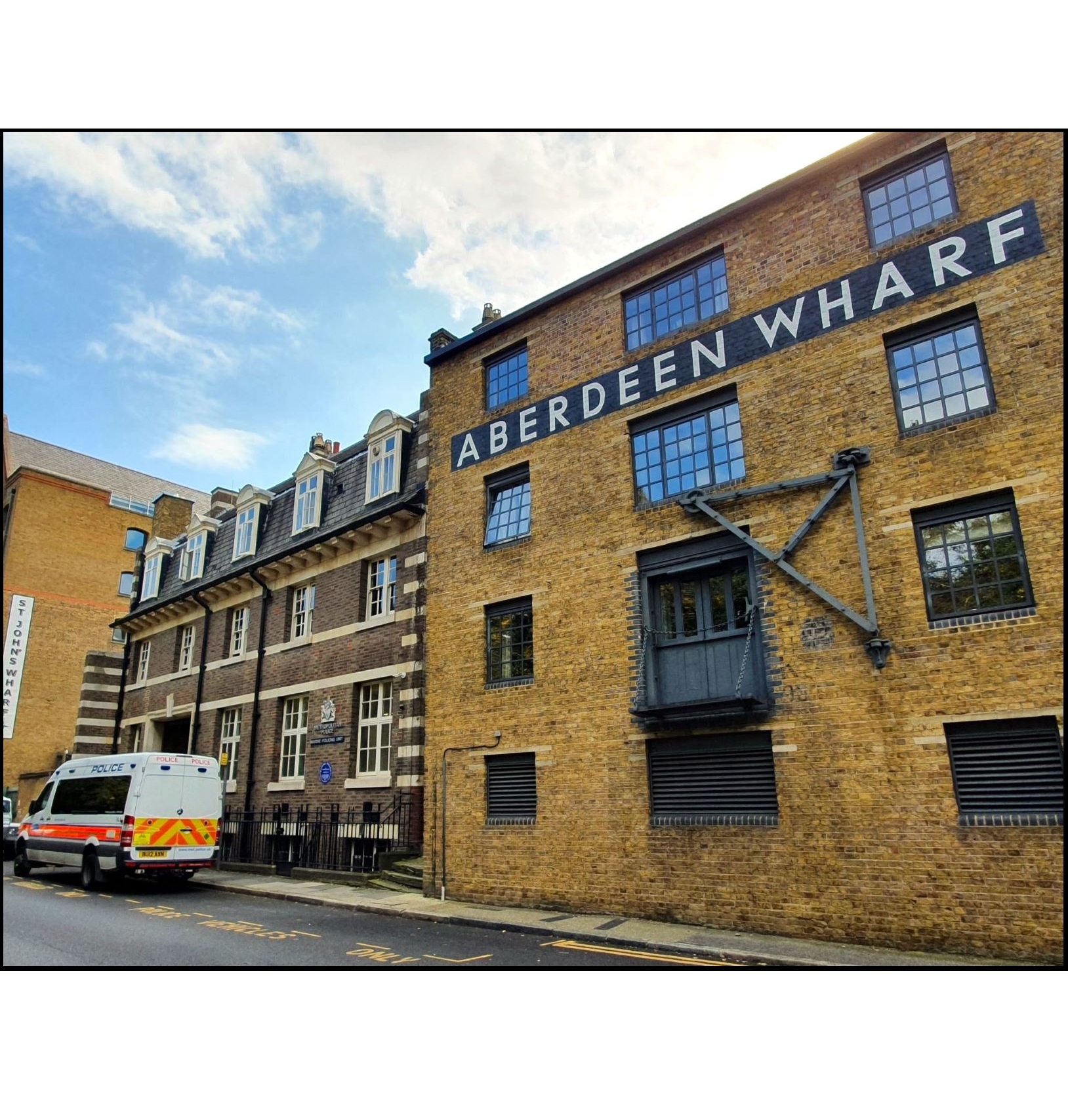
← The historic Marine Policing Unit HQ, between Aberdeen Wharf and St. John’s Wharf.
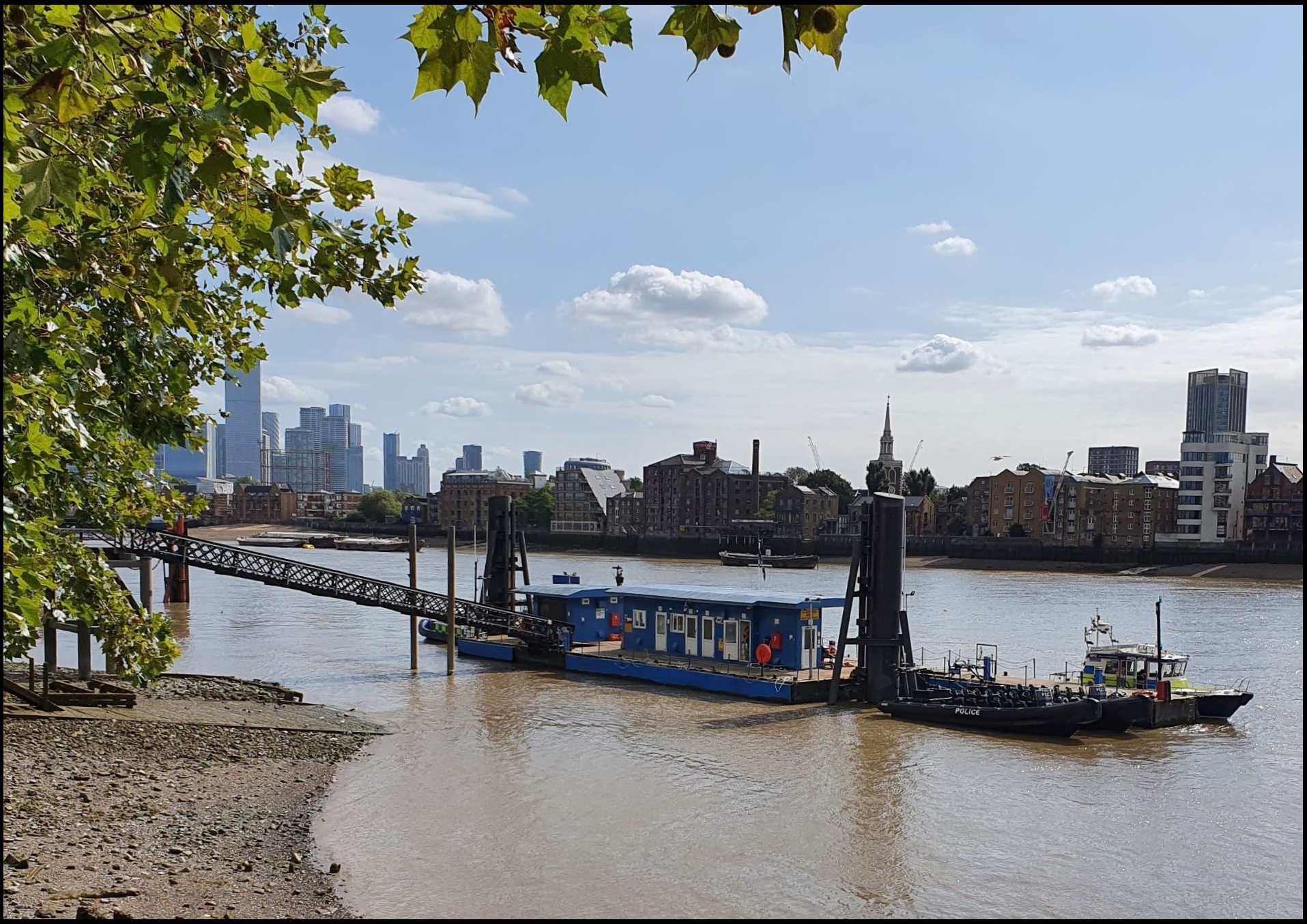
→ The police jetty, complete with blue lamp, lies directly behind the HQ
2. If your criminal tendencies stretch to attempting the assassination of the Lord Mayor in his office, defacing London Wall or committing fiendishly complex financial fraud against (or at the behest of) a city institution, the old bill who might come a-chasing you will be from the City of London Police, officially created in 1839, although a form of police force was already apparent at the time the Met was being created. They have a national role in tackling fraud and other financial crimes but are responsible for dealing with all crime within the ‘square mile’. If you want to know more about their history, the City of London police museum is close to the Guildhall.
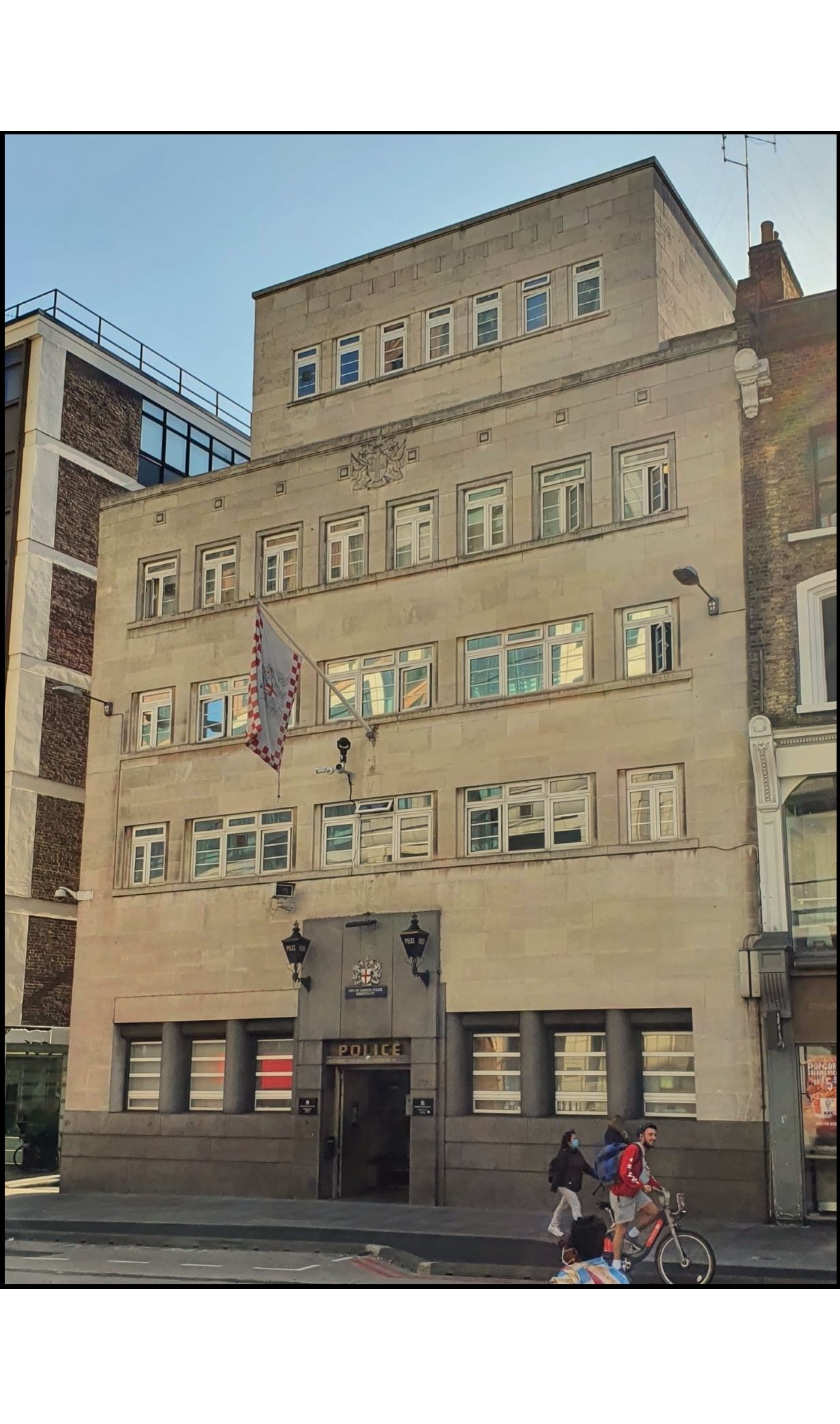
← One of only two City of London Police stations, this is Bishopsgate , built in 1939
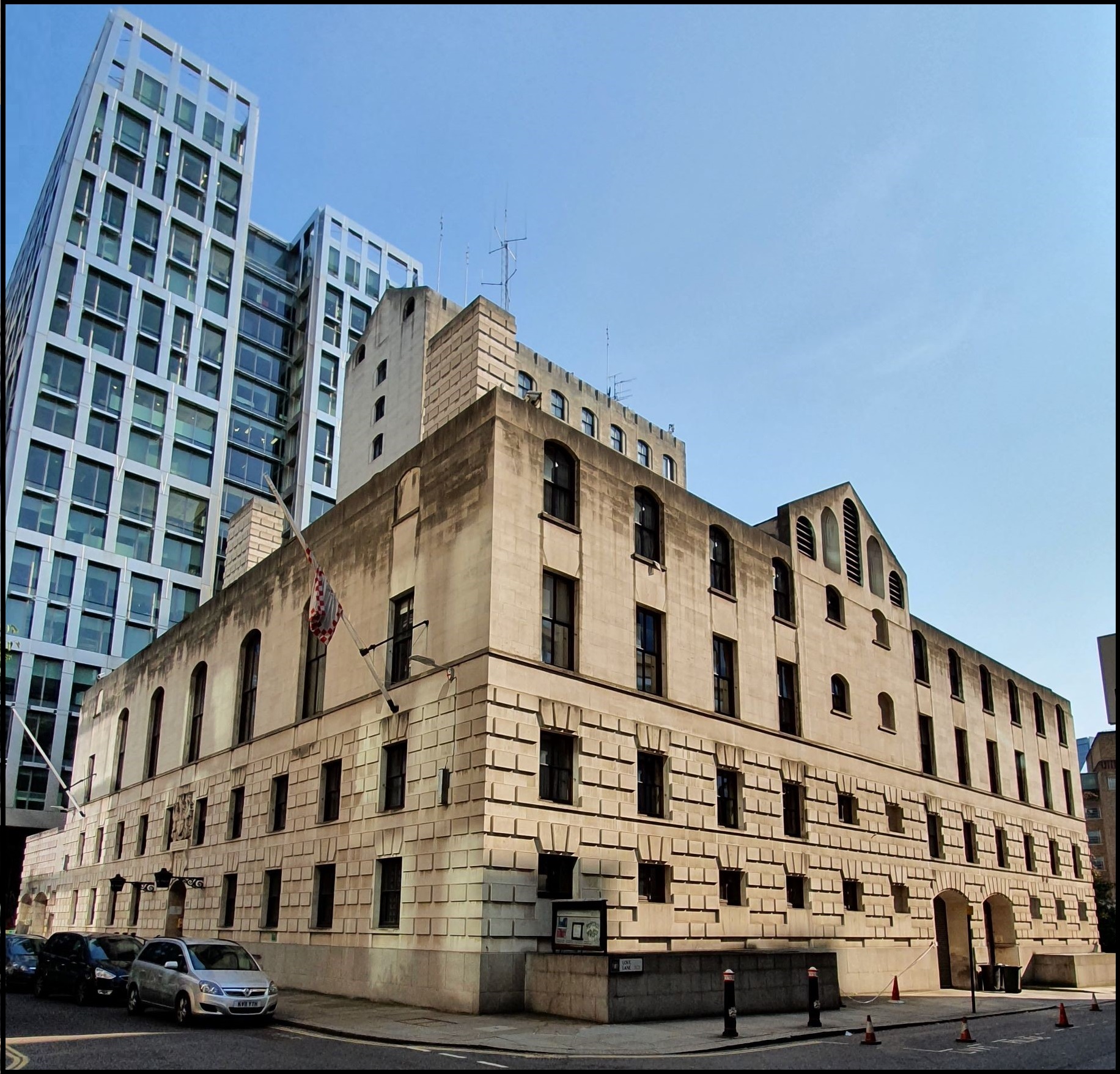
→The other – with stables for horses – is the neo-classical Wood Street completed in 1965
In case you intend half-inching (rhyming slang for pinching = thieving) something from a market trader in a wholesale market, I’ll give an honourable mention to the City of London Market Constabularies. However, employees of these bodies are no longer technically gavers at all, so you needn’t greet any representative with an obsequious “Good morning, officer”. They certainly can’t arrest you, but they are there to ensure the security of the area, and are useful if you’ve cut a finger or sprained an ankle as they also carry first aid kits. You’ll encounter them in Billingsgate (fish), Spitalfields (fruit, vegetables and flowers) and Smithfield (meat) markets, if you’re up early enough to see the markets in operation and have arranged a tour in advance – they aren’t normally open to the public. Formal policing of these areas is in the hands of the Met, except Smithfield which falls within the square mile.
3. If you would prefer to commit your illegal endeavors on a train or bus, on a railway line or at a station, then the fuzz taking a keen interest in your actions will be from the British Transport Police, formed in 1949 from the pre-nationalisation railway companies’ forces. A potted history appears on their own website, and they have a supporting role in the history of London Transport at the London Transport Museum Covent Garden.
4. With no port facilities still under the control of the Port of London Authority (‘PLA’), you are no longer at risk of being arrested by the PLA Police. However, they have metamorphosed into the Port of Tilbury Police so if you were to embark (sorry) upon a spot of cargo theft further along the Thames in Essex, these are the plods who will be eyeing you suspiciously. I’ve included them here as their badge clearly states “Port of Tilbury London”, which I guess is a nod to its previous ownership by the PLA, in defiance of geographical reality.
5. Urinate against the door of the Ministry of Defense (‘MoD’) building in Whitehall, or plan heinous terrorist atrocities, and you may find yourself in the hands of the mod plods of the Ministry of Defence Police, involved in policing all MoD sites in the United Kingdom and, rather more importantly these days, counter-terrorism investigations. This force was formed in 1971 but can trace its roots back to Admiralty, Army and Air Force constabularies created in 1923. Unsurprisingly, they are far more likely to be armed than other forces, which is something to bear in mind if you feel a full bladder in Whitehall. They are not to be confused with the redcaps of the military police, who are charged with policing members of the armed forces. Note that these two slang terms are unique to these forces.
6. From defending the realm to defending roses …. if your felonious little plan is to vandalise the Palm House, decapitate hybrid teas or punch a horticulturalist in the Royal Botanic Gardens at Kew, a bluebottle belonging to the Kew Constabulary might be putting the cuffs on. This force, founded in 1872, looks after the 300 acres of the Gardens, making its physical domain less than half that of the City of London Police (717 acres). They double as park rangers. Sadly, the similarly garden-friendly Royal Parks Constabulary (I have visions of bobbies trying to arrest Canada Geese for riotous assembly) was abolished in 2005. However, two further green space-related forces do survive …
7. Plan a misdemeanor on Hampstead Heath and you might be collared by a scuffer belonging to the Hampstead Heath Constabulary , which is a relatively recent creation (1992). This might have something to do with the Heath – despite not being in the square mile – coming under the control of the City of London Corporation in 1989. The Corporation has form when it comes to creating and managing police forces, controlling as it does the City of London Police. The Heath covers around 790 acres and has a good view of Central London from Parliament Hill.
8. Another open space managed by the City of London Corporation, and thus inevitably with its own police force, is the 5,900 acre Epping Forest. Slightly more imaginatively than usual, these constables are called Epping Forest Keepers and their modern history dates from the Epping Forest Act 1878. Epping Forest consists of large tracts of land from East London to deepest Essex and the keepers are more involved in managing the land than policing it, and anyway their policing powers only extend to offences under the 1878 Act – for everything else the local police force, be that the Met or Essex Police, are responsible. So, if you’re intent on being arrested by a keeper, it seems best these days to ride a horse in the Forest without a licence multiple times. There is a lot of historical information about the keepers in the Epping Forest Archives – they’re part of the London Metropolitan Archives.
Rest assured that crimes reported to the emergency phone number (999) will always be directed to the appropriate force, and that major crimes will be investigated by the Met or (particularly for some major financial felonies) the City of London Police; you will not – for example – find a Hampstead Heath Constable in charge of investigating a murder, even though they might have discovered and recorded it. Finally, this post is not a challenge to readers to collect arrests from all eight forces. There aren’t enough Kew horticulturalists to go around for a start.
Nearest Stations:
Credits: